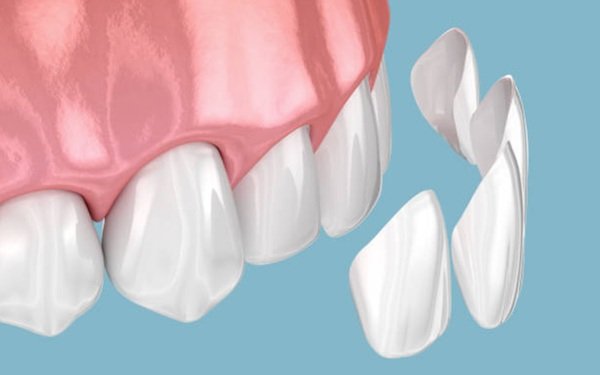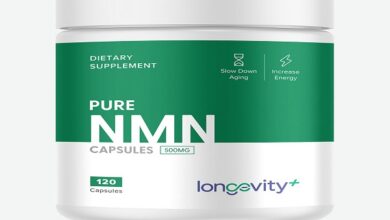The Future of Smile Design: Integrating Implants and Veneers

With the ever-evolving field of cosmetic dentistry, the merging of dental implants and veneers has emerged as a revolutionary approach to smile design. Not only does this merge address functional and aesthetic problems, but it also utilises the best available technologies to personalise, minimise, and achieve long-lasting results. Looking ahead, several trends and advances are shaping this merged approach to smile design. Restore your smile with high-quality dental implants in Melbourne. Enjoy durable, natural-looking results from experienced professionals focused on comfort, function, and aesthetics—all at a price that suits you.
1. Digital Smile Design: A Personalised Print
Digital Smile Design (DSD) has revolutionised the way dental practitioners plan smile makeovers. Utilising advanced imaging techniques, facial analysis, and computer-aided design (CAD) software, DSD enables the creation of a virtual copy of a patient’s smile. The copy serves as a blueprint, enabling the patient and the dentist to visualise the outcome before starting any physical work. This predictive technique enhances patient satisfaction and ensures that the final result aligns with the patient’s aesthetic expectations.
The merger of DSD with accurate dental implants and veneers enables the precise planning of implant placement and veneer design for optimal alignment, function, and aesthetics.
2. 3D Printing: Bringing Precision and Efficiency
The advent of 3D printing in dentistry has also affected the building of dental veneers and implants. The technology enables the rapid production of highly accurate models and restorations, thereby reducing the time required for treatment and enhancing the fit and comfort of the final product. 3D printing also enables the creation of customised implant abutments and veneer shells with a perfect likeness to the patient’s natural anatomy.
Furthermore, 3D printing enables the use of biocompatible materials that blend more effectively with the surrounding gum and bone tissues, thereby enhancing the longevity and success of the restorations. As the technology continues to develop, it will play an even larger role in the future of smile design.
3. Artificial Intelligence: Predicting and Personalising Outcomes
Artificial Intelligence (AI) is also gaining traction in the field of cosmetic dentistry. AI-powered software can examine the facial structure, analyse composition, and aesthetic preferences of a patient to predict the most suitable implant and veneer configurations. Its predictive ability enables efficient treatment planning as well as the prediction of complications even before they happen.
Additionally, AI can aid in the design process by suggesting the optimal shapes, sizes, and placements of implants and veneers to achieve a well-proportioned and natural-looking smile. With advancements in AI technology, its application in smile design will enhance the accuracy and efficiency of procedures.
4. Minimally Invasive Techniques: Preserving Natural Tooth Structure
The movement of minimally invasive dentistry is gaining momentum to preserve as much of the natural tooth structure as possible. In smile design, this means incorporating methods that call for less tooth reduction and drilling, which decreases patient discomfort and recovery time.
For instance, no-prep veneers are gaining popularity. These fragile porcelain shells are bonded directly to the front of the teeth with minimal or no enamel removal, making them an attractive option for patients seeking to achieve cosmetic enhancement with as minor an alteration of their natural teeth as possible. Similarly, the development of implant technology has also witnessed the introduction of less invasive surgical techniques, such as computer-guided implant placement, which increases accuracy and reduces healing times.
5. Biocompatible Materials: Enhancing Aesthetics and Longevity
The materials used in veneers and dental implants are crucial to the success and longevity of these restorations. Over the past several years, there has been a strong preference for biocompatible materials that not only match the natural colour of teeth but also blend seamlessly with the surrounding tissue.
When it comes to dental implants, titanium and zirconia are commonly used materials due to their durability, strength, and biocompatibility. These materials promote osseointegration, which is the fusion of the implant and the jawbone, making the implant stable and long-lasting.
For veneers, porcelain remains a favourite due to its translucency and its close resemblance to natural tooth enamel. Advances in porcelain technology have produced stronger, more durable materials that can withstand chewing forces and resist staining over time. If you’re looking for a budget-friendly option, cheap porcelain veneers in Perth offer an excellent balance of quality, durability, and aesthetics.
6. Smart Veneers: Where Technology Meets Oral Health
Among the emerging trends in cosmetic dentistry is the development of novel veneers that use technology to monitor and enhance oral health. The veneers contain sensors that can detect various factors, including temperature, pH, and bacteria, in the mouth. The data received by these sensors can be transmitted to a smartphone app, allowing patients and dentists to monitor their oral health in real time. Novel veneers also offer the potential for early identification of dental issues, such as cavities or gum disease, enabling early treatment and improved overall oral healthcare management.
7. Patient-Centred Care: Empowerment Through Education and Participation
The future of smile design is centred on patient-centred care, where patients are made active contributors to the decision-making process of their dentistry. This includes providing patients with ample information regarding their options, involving them in the planning stages, and utilising technologies that allow them to preview potential outcomes.
Through patient education and involvement in the treatment process, professionals can ensure that visual outcomes align with the patient’s expectations and aesthetic goals.
8. Sustainability in Cosmetic Dentistry
As environmental concerns continue to grow, attention to sustainability in cosmetic dentistry also increases. This includes the utilisation of eco-friendly materials, energy-efficient equipment, and waste-reduction practices in dental offices.
For example, some practices are adopting digital impressions and 3D printing with a view to minimising the need for physical moulds and reducing material waste to a bare minimum. Additionally, the development of biocompatible and recyclable materials for veneers and implants is serving to minimise the impact of smile design and make it more sustainable.
Conclusion
Material and technological advancements have enabled the incorporation of veneers and implants, ushering in a new era of smile design. With an emphasis on individualisation, minimally invasive treatment modalities, and a patient-oriented approach, the cosmetic dentistry of the future will strive for individualised, aesthetically pleasing, functional, and durable smiles.
With increasingly advanced technologies like Digital Smile Design, 3D printing, artificial intelligence, and new materials being developed, patients will increasingly get to enjoy more accurate, efficient, and customised treatments not only for aesthetics but also for oral well-being.
For prospective smile makeovers, being aware of today’s trends and customised advice from seasoned dental professionals can guide decisions that fulfil individual aspirations and achieve maximum success.





